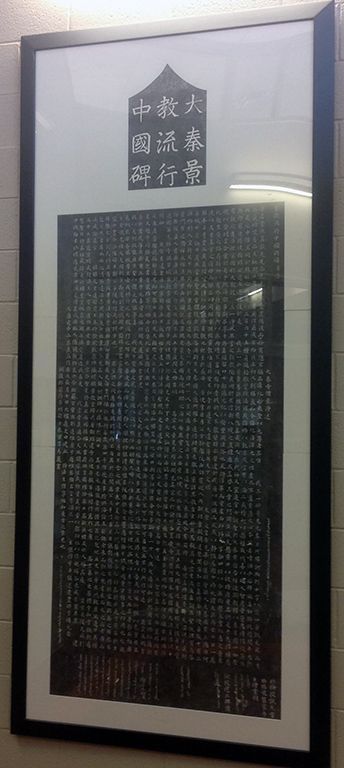Note
Expanded Wall Label:
The Nestorian Stone is the earliest evidence of Christianity in China.
It was in 506AD that Christianity was introduced by Nestorian missionaries from Persia and Nepal in the northern part of China. During the restoration of the unified empire of the T’ang Dynasty which (618-906AD), the missionaries of Byzantine orthodoxy from Syria were received by the T’ai Tsung empire in 635AD, and given permission to live and preach in China. In 781AD, a commemorative tablet was erected in Ch’ang-an, the capital city of the T’an Dynasty also called Si-an. The Nestorian church, however, vanished in the middle of the 9th century during a time of persecution. The tablet was discovered in the first half of the 17th century, its inscriptions by calligrapher Lü Xiuyan still intact. The tablet describes the faith of the Christian missionary Alopen of TaCh’in and outlines the doctrines of the church. The tablet is approximately eight and a half feet by three and a half feet.
The inscription begins by describing the mysterious attributes of Elohim (God) and then proceeds with a rapid sketch of creation as told in the book of Genesis and how man fell to the trick of Satan. Next, the Virgin gives birth to the Holy One (Messiah) – the incarnation – completing the work of redemption. The inscription continues with a discussion of baptism and the sign of the cross, followed by ethics and pieties practiced by believers, along with other teachings and doctrines.
The tablet also pays tribute to missionaries and benefactors of the church including “Adam (King T’sing, the author) who was a priest, choir bishop and pope for China,” followed by the names of approximately twenty missionaries.
